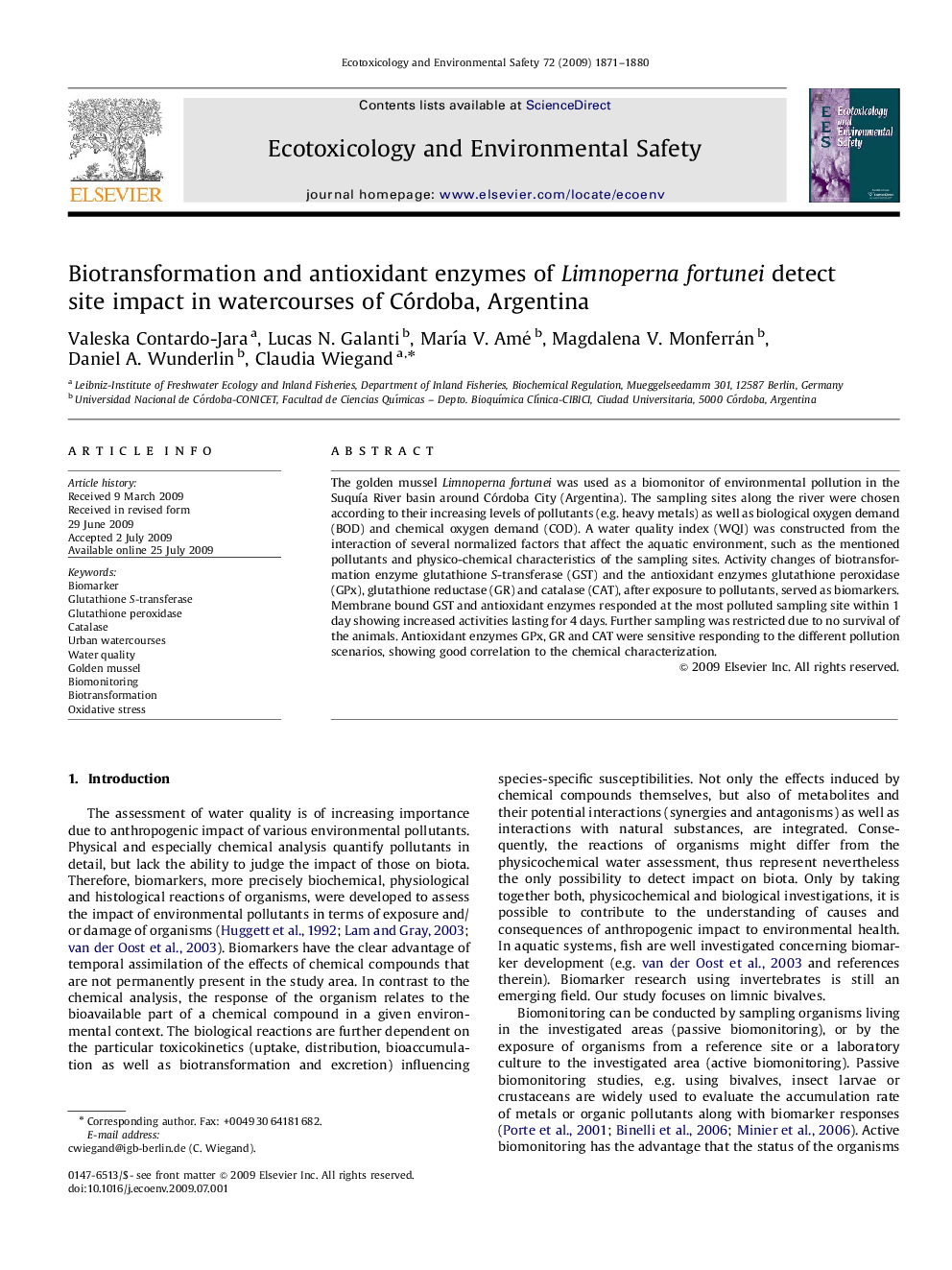| Article ID | Journal | Published Year | Pages | File Type |
|---|---|---|---|---|
| 4421532 | Ecotoxicology and Environmental Safety | 2009 | 10 Pages |
The golden mussel Limnoperna fortunei was used as a biomonitor of environmental pollution in the Suquía River basin around Córdoba City (Argentina). The sampling sites along the river were chosen according to their increasing levels of pollutants (e.g. heavy metals) as well as biological oxygen demand (BOD) and chemical oxygen demand (COD). A water quality index (WQI) was constructed from the interaction of several normalized factors that affect the aquatic environment, such as the mentioned pollutants and physico-chemical characteristics of the sampling sites. Activity changes of biotransformation enzyme glutathione S-transferase (GST) and the antioxidant enzymes glutathione peroxidase (GPx), glutathione reductase (GR) and catalase (CAT), after exposure to pollutants, served as biomarkers. Membrane bound GST and antioxidant enzymes responded at the most polluted sampling site within 1 day showing increased activities lasting for 4 days. Further sampling was restricted due to no survival of the animals. Antioxidant enzymes GPx, GR and CAT were sensitive responding to the different pollution scenarios, showing good correlation to the chemical characterization.
